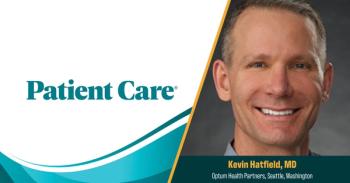
Drug Benefit Trends
- Drug Benefit Trends Vol 22 No 1
- Volume 22
- Issue 1
Rising Rates of Disability Among Older Adults
A recent study has shown that rates of disability may be rising among noninstitutionalized adults 65 years and older in the United States.1 “People are living longer, but many are also living sicker,” said Amani Nuru-Jeter, PhD, MPH, assistant professor of community health and human development at the University of California Berkeley School of Public Health, and coauthor of the study.
A recent study has shown that rates of disability may be rising among noninstitutionalized adults 65 years and older in the United States.1 “People are living longer, but many are also living sicker,” said Amani Nuru-Jeter, PhD, MPH, assistant professor of community health and human development at the University of California Berkeley School of Public Health, and coauthor of the study.
To determine rates of basic activities of daily living disabilities and functional limitations, Nuru-Jeter’s team analyzed data from the American Community Survey and the National Nursing Home Survey. Between 2000 and 2005, there was a 9% increase in the number of respondents who reported difficulty with daily activities, such as dressing and bathing, because of a health problem that had lasted for at least 6 months. “This study is providing an early warning sign that the decline in disability rates we’ve been hearing about might be ending,” said Nuru-Jeter.
References:
Reference
1. Fuller-Thomson E, Yu B, Nuru-Jeter A, et al. Basic ADL disability and functional limitation rates among older Americans from 2000-2005: the end of the decline? J Gerontol A Biol Sci Med Sci. 2009;64:1333-1336.
Articles in this issue
almost 16 years ago
Opioid Overdoses on the Risealmost 16 years ago
New Algorithms for the Management of Treatment-Resistant Bipolar Depressionalmost 16 years ago
The Role of Antidepressants in the Treatment of Bipolar Depressionalmost 16 years ago
Medication Compliance Initiatives in the Workplacealmost 16 years ago
2009 H1N1 Influenza: Antiviral Use for Prevention and Treatmentalmost 16 years ago
More Recovery Act Dollars Awarded to Buoy Up Community Health Centersalmost 16 years ago
Medicare to Cover HIV Screening TestsNewsletter
Enhance your clinical practice with the Patient Care newsletter, offering the latest evidence-based guidelines, diagnostic insights, and treatment strategies for primary care physicians.

















































































































































































































































































